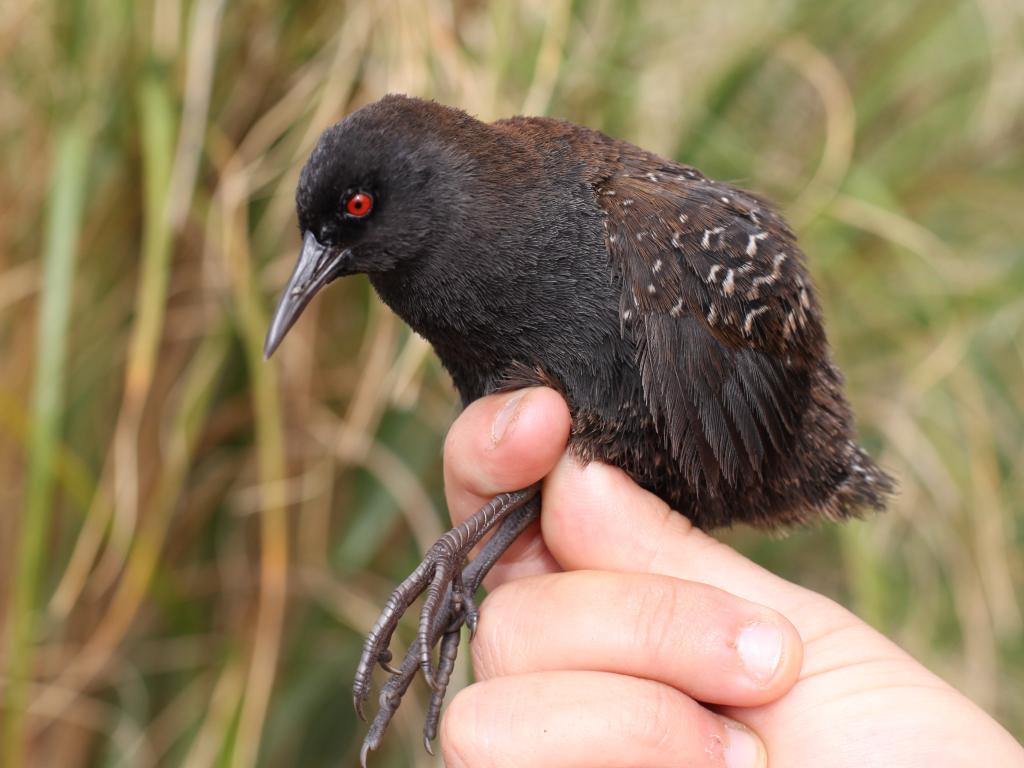Mystery of the world's smallest flightless bird solved

Mystery of the world’s smallest flightless bird solved
The smallest flightless bird of the world lives as far away as you can travel—on the aptly named Inaccessible Island, situated in the middle of the South Atlantic Ocean. This is the Inaccessible Island Rail, first described to science by British physician Percy Lowe in the 1920s. The species seemed so different from other living rail species, that it was placed in its own genus. Inspired by the mythical island Atlantis, Lowe named it Atlantisia. The physician also suggested that the loss of flight was an old feature, and that the rail’s ancestors would have colonized Inaccessible Island by foot, on land bridges or now sunken continents!
The rail is endemic to Inaccessible Island: it originated here and occurs nowhere else. Over the decades, scientists have struggled to determine whether the ancestor of the rail had come from Africa or from South America. The rail family has many look-alike species, which have repeatedly fooled taxonomists to draw incorrect conclusions about their relationships.
But modern technology offers us a better glimpse into the evolutionary history of species. Using “next generation sequencing” techniques, a small research team from three continents was able to finally solve the mystery in a study just published in the scientific journal Molecular Phylogenetics and Evolution.
The lead author Martin Stervander of Lund University - now a postdoctoral fellow at the University of Oregon - explains:
- Based on DNA evidence, we now know that reaching Inaccessible Island was no stroll on sunken lands, but that the ancestors reached the island by flight from South America about 1.5 million years ago. Its closest living relatives are the Dot-winged Crake in South America, and the Black Rail in South and North America, currently placed in two other different genera.
Peter Ryan, director of the FitzPatrick Institute of African Ornithology, and one of the authors of the study, is the living person who has lived the most time in the tiny (12.65 km2) and otherwise uninhabited Inaccessible Island, where he is currently on a 3-month expedition. He explains:
- Birds of the rail family are extraordinarily good at colonizing remote islands. Finding themselves in an environment free of predators, they have no need for flying and can fully evolve into their typical behaviour: skulking around in dense grass like mice or rats. Maintaining the complex flying apparatus is energetically costly and hence, when not in use, natural selection favours its reduction, leading to flightlessness. Analyses of sub-fossils on islands have revealed that many species of flightless rails occurred on oceanic islands all over the world before the arrival of humans. People brought with them a variety of predators such as cats, dogs and rats,
to which flightless species stood no chance.
Martin Stervander highlights that:
- The Inaccessible Island rail is one of the last representatives of what may have been one of the most diverse bird groups, with up to 1,600 species estimated to having occurred on the Pacific Islands alone. The reason for it being still with us is the lack of introduced predators on Inaccessible Island, an extremely rare event for most oceanic islands in the world. This highlights the importance of preventing the introduction of rodents or predators to oceanic islands and the need to support their removal whenever success for such endeavour is deemed possible.
Reference: Martin Stervander, Peter Ryan, Martim Melo & Bengt Hansson (2019) The origin of the world’s smallest
flightless bird, the Inaccessible Island Rail Atlantisia rogersi (Aves: Rallidae). Molecular Phylogenetics and Evolution
130: 92–98. Available online at https://doi.org/10.1016/j.ympev.2018.10.007.
